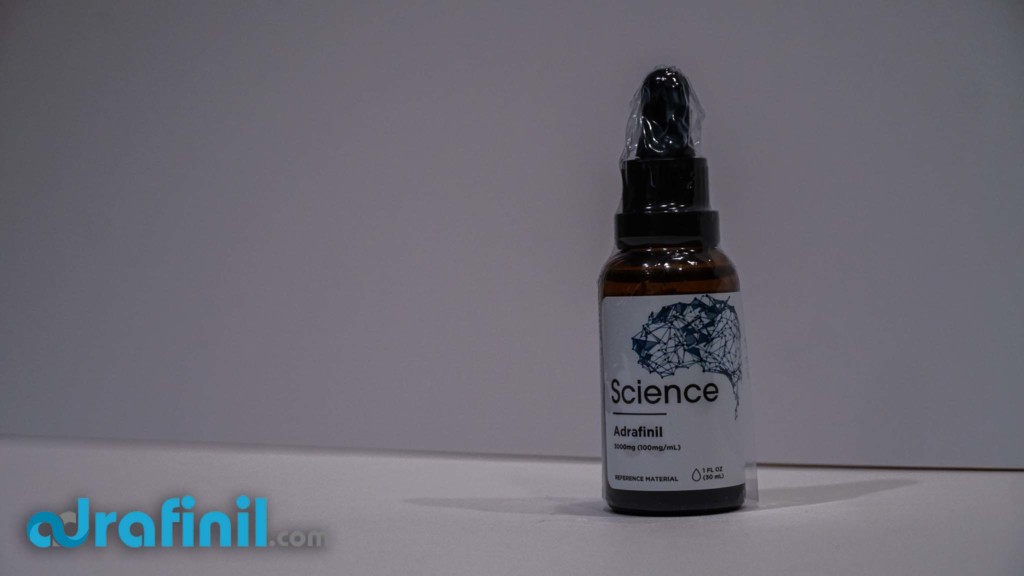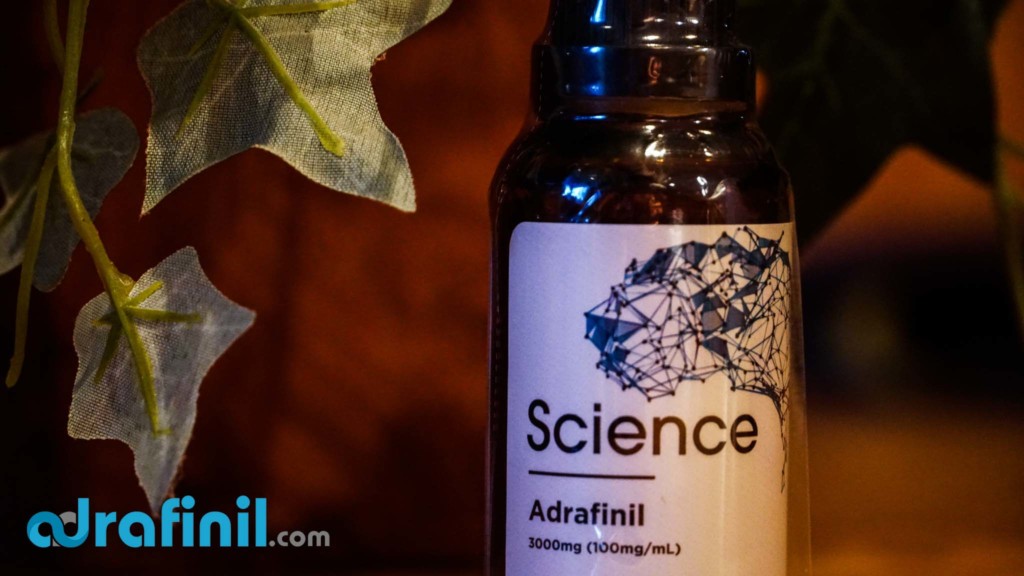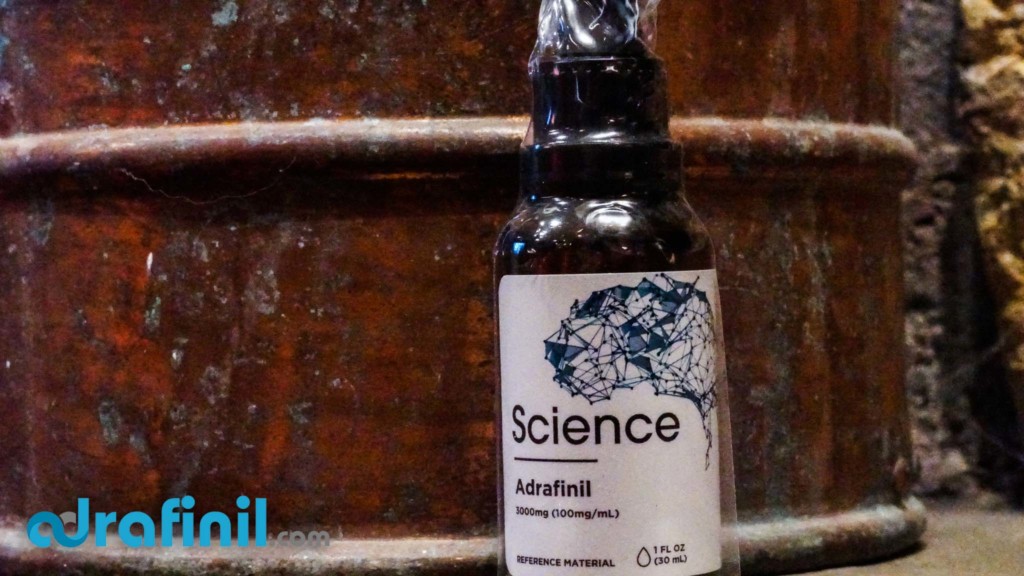Researchers interested in exploring nootropic (cognitive enhancing) compounds may be curious about using adrafinil and phenibut for their next research project. Both of these compounds have been shown to produce nootropic effects and warrant further investigation.
This guide will examine the history, benefits, and side effects of both adrafinil and phenibut, and seeks to help researchers through the process of identifying the better option for their work. Topics discussed will include the legal status, cost, and known safety issues regarding both of these research chemicals.
As a bonus, researchers can also discover our top recommendation for a reliable vendor that can ship either of these reference materials worldwide.
Order Adrafinil online from the best vendor in the world!
Great prices, quick shipping, and guaranteed delivery.
Disclaimer: The contents of Adrafinil.com are for informational and educational purposes only. We do not provide legal advice. Likewise, we do not provide medical advice, diagnosis, or treatment. Please consult your physician prior to consuming Adrafinil or related nootropics. Your access to Adrafinil.com is subject to our full Disclaimer and Terms of Use.
What is Adrafinil?
Adrafinil is currently available to qualified researchers as a research chemical, but it has an interesting history as a prescription medication.
The history of adrafinil
Adrafinil was discovered in 1974 by the French pharmaceutical company Louis Lafon Laboratories and was found to act as a powerful psychostimulant that can significantly increase nocturnal activity in animals [1].
Further research revealed more about adrafinil’s mechanism of action: it is metabolized (converted) in the liver into a substance called “modafinil.” Lafon’s scientists managed to isolate modafinil in 1976 and began developing both adrafinil and modafinil concurrently.
Following successful human clinical trials, adrafinil was approved by the French medical authorities and launched under the trade name “Olmifon” in 1985. It was prescribed to elderly patients who struggled to stay alert and mentally active during the day [2].
While adrafinil was a popular and successful drug, it fell into clinical disuse following Lafon’s decision to release modafinil in 1994 under the proprietary name “Modiodal.” Modiodal was more powerful and effective than Olmifon, and quickly became Lafon’s flagship product. The French authorities ultimately revoked adrafinil’s marketing approval and Cephalon France voluntarily discontinued its commercialization in 2011.

Benefits of Adrafinil
Clinical trials involving Olmifon demonstrated that it offers the following effects when administered to elderly patients at a dose of 2-4 tablets (600-1,200 mg) per day [3, 4]:
- Greater vigilance and sense of alertness
- Longer attention span
- Better powers of recall
- Improved mood
- Increased energy
- Reduction in anxiety
Researchers should note that these trials involved elderly patients and that adrafinil’s efficacy has yet to be explored in other age groups. Below is an overview of the main benefits offered by adrafinil.
Increased alertness in elderly patients
Adrafinil’s main research-backed benefit is that it increases vigilance and wakefulness in elderly patients with age-related cognitive difficulties [2]. To date, the compound has not undergone human clinical trials for any other age group, or for the treatment of any other ailment.
Cognitive benefits
Adrafinil’s active metabolite—modafinil—has been widely researched and found to offer significant cognitive and wakefulness benefits [5], even in healthy, non-sleep-deprived test subjects [6].
While human clinical trial data in non-elderly populations remains lacking, several animal studies support the idea that adrafinil offers cognitive benefits. One study found that it increased “performance motivation” in canines by accelerating “electroencephalographic activity” in the animals’ brains [7]. Conversely, a later study found that adrafinil impaired the working memory of elderly beagle dogs [8].
Enhanced athletic ability
While no research studies have focused on adrafinil’s efficacy as a performance enhancer, it is believed that the World Anti-Doping Organization’s decision to add adrafinil to its list of banned substances in 2004 was due to the compound’s ability to boost vigilance and focus [9]. Adrafinil’s scheduling as a banned substance strongly indicates that it can enhance athletic performance.
Having reviewed adrafinil’s main benefits, we will now examine its side effects and safety.
Adrafinil Side Effects and Safety
The Olmifon product summary sheet published by Cephalon France summarized the main side effects, as observed during adrafinil clinical trials [10]:
- Headaches
- Tremors
- Rashes
- “Inner tension”
- Mood swings and/or agitation
- Gastralgia
- Confusion and/or aggression
- Oral-facial dyskinesias
As noted by Thobois et al., orofacial abnormal movements caused by adrafinil is an extremely rare side effect and can be treated after adrafinil is stopped [11]. According to the Olmifon product summary, no case of adrafinil overdose has been reported [10]. While this document was published in 2011, there still have not, to our knowledge, been any reported cases of fatalities linked to adrafinil exposure.
While adrafinil is liver-metabolized and may place strain on the liver, it can be administered to subjects with hepatic and renal impairment. Cephalon France’s guidelines advised that patients with these conditions should be prescribed a lower dose of 300-600 mg/d [10].
Researchers should not administer adrafinil to test subjects who are pregnant and must check for prescription drug interactions before starting research.
In the following section, we will discuss the history, benefits, and side effects of phenibut.
What is Phenibut?
Phenibut is a neuropsychotropic agent that acts as a GABA mimetic and has both nootropic and anxiolytic effects. It was first synthesized in Russia in the 1960s. Unlike adrafinil, phenibut is still used in clinical practice in countries including Russia, Latvia, Belarus, and Ukraine. It is used to treat patients with conditions including anxiety, insomnia, tension, and post-traumatic stress disorder (PTSD) [12].
Below we’ll summarize the main benefits offered by phenibut.
Benefits of phenibut
Researchers should note that phenibut’s clinical use is limited to Russia and former CIS countries, and much of the relevant clinical trial data is published in the Russian language [13]. Notwithstanding these limitations, phenibut appears to offer the following benefits [14, 15, 16]:
- Improved cognition (memory, recall, speed)
- Better mood
- Lower social anxiety/increased relaxation in social situations
- Better control over feelings
- Post-workout benefits related to muscle responsiveness and recovery
Let’s look into phenibut’s potential benefits in greater detail.
Anxiolytic properties
Phenibut exhibits strong anxiolytic (anxiety-reducing) effects and is used to treat patients with depression, asthenia, PTSD, and other psychosomatic and neurotic disorders. It stimulates dopamine receptors and helps lower anxiety, tension, and fear, in turn, improving sleep [12].
Cognition-enhancing properties
Phenibut offers strong nootropic benefits [12]. According to one study, it is commonly taken outside of clinical practice for its cognitive and “euphoric properties” [17].
Phenibut Side Effects and Safety
Phenibut side effects are clearly illustrated in the available literature. They include [13]:
- Headache
- Anxiety
- Agitation/irritability
- Drowsiness
- Nausea
- Sedation
- High possibility of tolerance and dependence
- Significant risk of overdose (intentional or accidental)
- High risk of hospitalization
Below, we will discuss the main side effects and safety issues associated with phenibut.
Physical dependence
According to research, phenibut has a clear ability to “induce physiological changes associated with withdrawal and physical dependence” [18]. These include tolerance and an inability to fulfill work duties [19].
Psychological dependence
Phenibut has been linked to cases of psychological dependence [16] that have required “treatment with a phenobarbital taper based on a protocol to treat sedative use disorder” [20]. In a literature review conducted by Hardman et al., a total of 22 cases of acute phenibut withdrawal were found [21].
Overdose
In contrast to adrafinil which has not been linked to any cases of intentional or accidental overdose death [10], phenibut has been linked to numerous severe outcomes due to overdose [17]. This puts users at a high risk of hospitalization, potentially necessitating ICU admission.
Death
There has been one reported case of a fatality arising from a phenibut-only exposure in the United States [22]. The circumstances surrounding this event have not been made public.
After reviewing the side effects and safety of both adrafinil and phenibut, the following section will explore the various similarities and differences between these two research nootropics.

Adrafinil vs. Phenibut | Similarities
There are several similarities between adrafinil and phenibut that researchers should note before experimenting with either reference material.
Legal status
Both adrafinil and phenibut are available as reference materials in most countries. At least in the United States, they can be purchased online by researchers and there is no significant difference in their legal status. However, researchers are advised to check local laws before placing an order.
At the time of writing, phenibut is not controlled in the United States, Canada, or New Zealand. Phenibut is a “New Drug” under the U.S. Federal Food, Drug, and Cosmetic Act (FD&C Act), meaning that it has not undergone the USFDA drug review process. Phenibut has no recognized medical use in the U.S. and most other countries.
In Australia, phenibut is classified as a Schedule 9 substance meaning that its use, sale, and manufacture is banned [13].
Cognitive-enhancing properties
Both adrafinil and phenibut have cognitive-enhancing properties. Adrafinil’s main metabolite modafinil has exhibited cognitive benefits in healthy individuals [6], while phenibut’s cognition-enhancing effects are well documented [12]. Both substances are strong candidates for further research in this area.
Any Differences?
This section will outline the significant differences between adrafinil and phenibut that researchers should be aware of before running an experiment.
Dosage
As both adrafinil and phenibut are research chemicals, there is no medically recognized “safe” dose for either compound. However, a review of the available literature indicates how these drugs have or may be dosed in experimental and/or medical settings.
Adrafinil Dosage
When adrafinil was available as Olmifon (prior to 2011), the recommended dose for elderly patients was 2-4 tablets (600-1200mg) [10]. Most Olmifon trials dosed adrafinil at 900 mg/d for up to 90 days [3, 4].
Phenibut Dosage
According to one study, “phenibut is taken orally at an average dose of 2.4 g” (240 mg) [17]. Where available in capsule form, phenibut is dosed at 200-500 mg.
Cost
Although both adrafinil and phenibut are available in powder form and as solutions, the cost of researching these substances may vary significantly.
- Through our preferred vendor, one 3000ml bottle of Adrafinil solution dosed at 100mg/mL costs $19.99, giving a cost of $1.98 – $3.96 per 300-600 mg dose.
- One 3000ml bottle of Phenibut solution dosed at 100mg/mL costs $14.99, giving a cost of $1.19 per 240 mg dose,
While both of these reference materials can be purchased for much less when ordered in bulk, phenibut appears to be a significantly cheaper chemical on a dose-per-dose basis.
Safety Profile
The third key difference between adrafinil and phenibut lies in the latter’s safety profile. Phenibut has been linked to physical and psychological dependence [18] and withdrawal symptoms [19].
Research into adrafinil safety is lacking; however, its main metabolite – modafinil – has been linked to dependence in one documented case [23]. The lack of available data indicates that further research in this area may prove fruitful for interested researchers.
Where to Buy Online?
While adrafinil and phenibut are freely available to researchers, finding a reliable, trustworthy, and cost-effective vendor can be a challenge.
Our team has evaluated the top vendors, finding that Science.bio excels in all areas.
Here are some of the things they do exceptionally well:
- Independent testing: Science.bio has well-established quality control practices in place to ensure that their adrafinil and phenibut are top quality. Every batch is tested by an independent lab to ensure that it meets Science.bio’s exacting standards. Certificates of analysis for each batch are published on the website for full transparency.
- Bulk-buy discounts: Science.bio offers steep discounts on adrafinil and phenibut for researchers who buy in bulk.
- Tamper proof packaging: Science.bio’s adrafinil and phenibut solution is packed in tamperproof, UV-resistant vials to ensure freshness and longevity. This helps ensure reliable results when conducting long-term experiments.
- Free worldwide shipping: Science.bio offers same-day-dispatch on all orders and ships adrafinil and phenibut worldwide. Shipping is waived on all domestic orders over $100, drastically lowering the cost of experimenting with either of these two reference materials.
- 30-day money-back guarantee: In the unlikely event that researchers are not completely satisfied with the reference materials ordered from Science.bio, they have 30 days to return the order for a full refund.
For researchers looking for either high-quality adrafinil or phenibut, Science.bio offers these reference materials at highly competitive prices.
Highly recommended!
Ready to order Adrafinil from the top-rated online vendor?
Adrafinil vs. Phenibut | Verdict
This research guide has explained the similarities and differences between two promising research nootropics: adrafinil and phenibut.
Both adrafinil and phenibut offer cognitive-enhancing benefits and have clear potential for further research. The lack of evidence with regard to adrafinil’s cognitive-enhancing properties indicates that further research in this area appears warranted.
Based on the available literature, phenibut presents far greater safety concerns compared to adrafinil. This suggests that researchers should exercise great caution when running tests with phenibut.
Researchers interested in conducting further research into either of these materials are advised to check out Science.bio to buy research-grade adrafinil and phenibut at fair prices.

